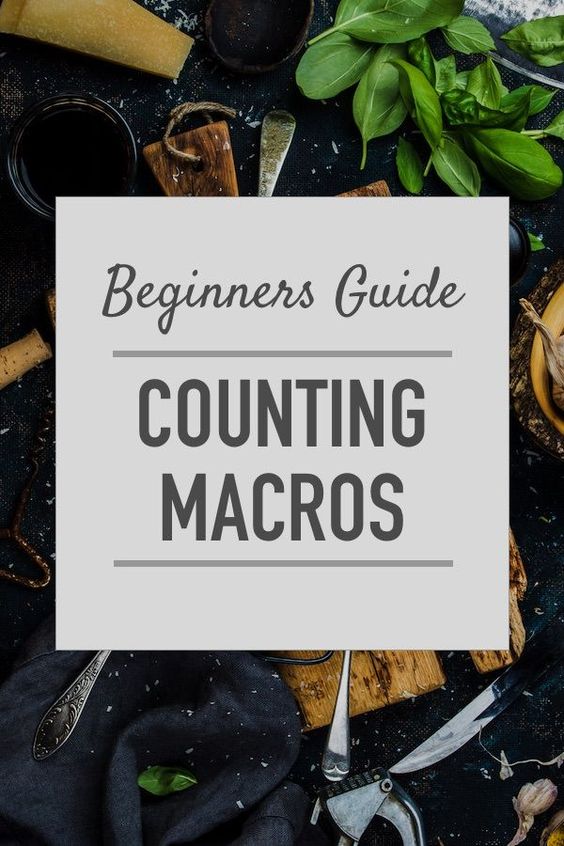What is a macro anyways, and how do I track them?
A Macronutrient is defined as:
A substance required in relatively large amounts by living organisms, in particular; a type of food (e.g., fat, protein, carbohydrate) required in large amounts in the human diet.
Ok, so what does that mean to the normal person? The calories that we consume can be divided up into three categories: protein, carbohydrates and fats. Some may argue alcohol to be a macronutrient as well…but that is a topic for another post! Simply put these are the three macros that our bodies recognize and convert into energy to fuel our bodies.
The energy in food is always measured in macros. The only place calories come from is a macro. Everyone has a unique combination of macros that works optimally for their body and whatever goal they have set for themselves. Whether you are looking to lose fat, build lean muscle, or simply live a healthy sustainable life while maintaining your weight, we all have an individual amount of protein, fats, and carbs that will help us achieve these goals in the best and quickest way possible.
Now, there are A LOT of calculators, equation, websites, theories and opinions out there in the vast interwebs regarding what the “perfect” amount of each macro is. But, what we do know for certain is a fairly well-known idea of the bare minimum of each macro to stay healthy and “safe”. Most of these numbers are based off your personal statistics such as weight, height, age, and lifestyle/energy output. The more energy we use either in our jobs every day, or in the gym, the more calories we must consume to support those activities.
Each protein macro has a value of 4 calories. Meaning, if you eat a slice of chicken that contains 10 grams of protein, you know that you will be consuming 40 calories for that slice of chicken. Same goes for carbohydrates. Something that is made up of 10 grams of carbs will also equal 40 calories. But, fat on the other hand accounts for 9 calories per gram. Therefore, if you eat something with 10 grams of fat in it, that will equate to 90 calories. So, what happens when you run into that 7 Eleven on the corner and grab a quick snack bar on the go, look at the label and it says 14g fat, 9 grams protein, and 24 grams carbs?
14 grams fat x 9 = 126 calories
9 grams protein x 4 =36 calories, and
24 grams carbs x 4 = 96 calories
So, if we’ve done our math correctly, we have just consumed 126 + 36 + 96 = 258 calories. Yay math!
See this is not so scary, I promise.
Thankfully, there are numerous quality apps out there that will calculate all of this for you throughout your day as long as you are logging everything you are eating, and even scanning barcodes directly into their database. My Fitness Pal is probably the most widely known and used.
So how do we know what our macros should be? Well to be honest, I am not actually going to get into that here. Proper macro programming is something that is EXTREMELY individualized, and something that I firmly believe should be discussed and agreed upon by you and your nutrition coach. That is where I come in (shameless plug). But, this is a topic that I will dive into through out other future blog posts as they come up.
As a general rule, once I calculate a person’s total calories that they should be consuming on a daily basis to support their body, I first like to figure out someone’s proper protein intake dependent upon their lifestyle and their goals. Once I subtract those protein calories from their total calories, I then fill the rest of their diet in with carbs and fat. But again, these will also be dependent upon their lifestyle and goals but also upon their personal preferences. I whole heartedly believe that as long as your programming is something tailored to your liking, and something that you genuinely enjoy, you will stick with it much longer than if it were something that you hated. Can I get an amen!?
As you can see there is no absolute definitive macro count across the board answer for the general population here. Protein will be dependent on someone’s body weight, and I like to prescribe carbs to fuel someone’s muscles for performance, and fats for regulating hormones, all three equally as important as the other but will vary person to person. What is your preferred method of exercise? Are you a competitive athlete? Are you an aesthetic bodybuilder? Are you a carpool mom who just needs to be able to keep up with her kids? Are you a fire fighter working 4 nights in a row? Do you have gut issues? Are you on hormonal birth control? There are endless bits of information that could influence what your personal diet should look like.
So, we now know what macros are, and we know how to count them. We’ve hired Kelly as our personal nutrition coach. She has developed the PERFECT macro program for us. But, how can we make sure we hit our macros on a daily basis? It is really quite simple! There are two ways to accomplish this, and both are equally correct. It just depends on which one fits your lifestyle a little better.
Every time you log something into your food tracker such as My Fitness Pal, you check in on your “macro” tab and it will tell you exactly how many grams of protein, fat, and carbs you have eaten for the day. All you must do is make sure those numbers match whatever your given macro allowances for the day are and BOOM! You’ve done it! By the end of the day it can sometimes turn into a bit of a puzzle game, trying to figure out how many servings of what foods will get you to your goals and not under or over too far in either direction. I usually look at it as a bit of a game and that makes it more fun for me to pick the perfect foods to make up a perfect day.
Your second option would be to spend 10-15 minutes the day before, or even just one day a week creating the perfect day of meals in your tracker to come out to your exact macros by the end of the day. Fill your meals with all your favorite foods, whatever you desire. Starting with breakfast, lunch and dinner, and then you can fill in the rest with your snacks. Just make sure all your macros are hit on the dot. This way you can wake up the next morning and know EXACTLY what you need to eat to have the perfect day of macros. From there you can duplicate that day multiple times throughout the week just to make your life easier. As long as you are happy with your choices and you enjoy what you are eating. That is key!
I do recommend mixing up your diet often. Yes, it is much easier to plan a day, and then follow that same day over and over and over again, for an infinite amount of time. But not only does that get a tad bit boring…. BUT you are going to be missing out on extremely important micronutrients that are going to be found in a wide variety of foods that you might not be consuming because you are tunnel visioned on this “easy” meal plan that doesn’t require any thought.
My last tip for you is going to be on how to eat out while you are tracking your macros. More and more restaurants are making the calories and macros of their menu items available not only on their menus, but online on their websites, as well as in macro trackers that we all use! How convenient is that? You no longer have an excuse NOT to track while eating out! Before going out to eat, just make a decision on what you plan to order ahead of time and plug this into My Fitness Pal as accurately as possible. There may be some slight inaccuracies, BUT something is better than nothing, and we can usually get pretty darn close. As long as you make the decision for yourself to stick to those items and you have them in your log for the day, you can plan the rest of your day around those foods and fill in your other meals to hit your macros. Tada!

